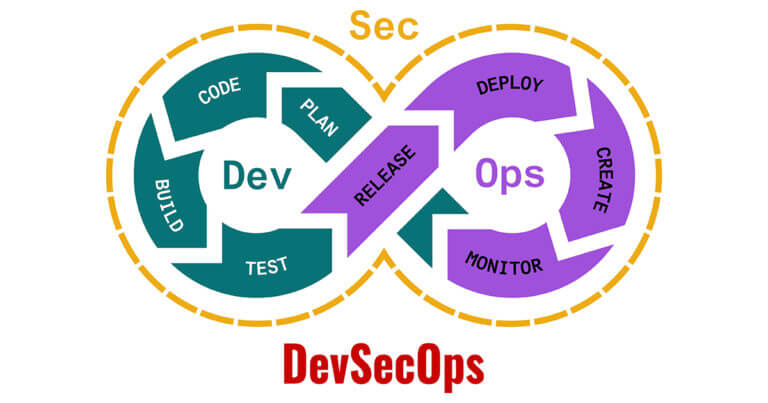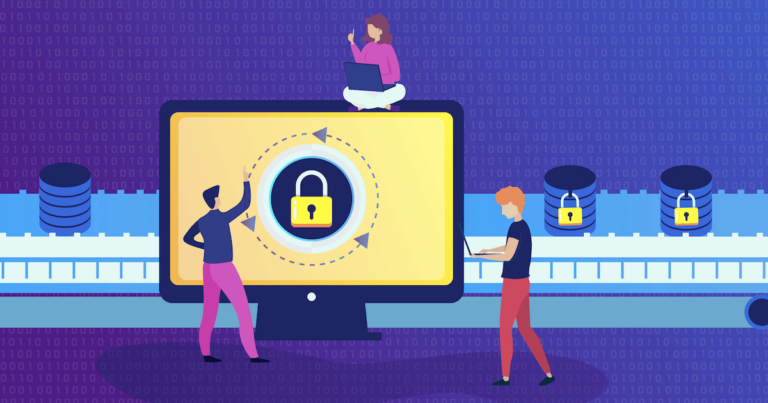In recent years, DevOps as a development process has gained traction and popularity for providing the opportunity to outperform the competition through continuous innovation and meeting customer needs. Although this development methodology brings together development and operations teams to work across the entire application lifecycle to speed up delivery and innovation, it creates security vulnerabilities causing a negative impact on software release. In DevOps, a static security model is tacked on at the end that no longer produces effective results and can even undermine development efforts. Now you must be thinking, where does security fit into the DevOps mix?
We will find the answer to the above question in the below sections of the blog. Before that, you must know that DevSecOps focuses on people, processes and technology. This blog post is dedicated to people and their changing roles in cloud adoption. Now continue reading the blog to know what is devsecops? and get the answer.
What Is DevSecOps?
DevSecOps is a process of incorporating security in a DevOps workflow. It ensures a generous amount of security is added to the developed applications or products. Security is being promoted as a first priority throughout the product/service development lifecycle and as a shared responsibility among developers, operations and security teams. It ensures efficient delivery of software products/services without compromising on security grounds. DevSecOps adoption demands a cultural shift just like DevOps along with the new tools and processes such as:
- Adopting security as a code mindset in every stage of the development process by everyone.
- Using tools and platforms like IDE that additionally provide security features ensuring security is continuously integrated.
- Automate security practices to prevent workflow bottlenecks.
How DevSecOps Fits In DevOps?
We just read above that DevSecOps is about adding and automating security at every stage of SDLC and all the way to production. To understand why DevSecOps is important and how it fits well in DevOps, we need to first understand how DevSecOps works? What are DevSecOps principles? And the DevSecOps best practices ensure smooth transition from DevOps to DevSecOps mindset.
How Does DevSecOps Work?
The DevSecOps model requires development and operations teams to do more than just collaborate. In DevSecOps, security teams join DevOps teams at the beginning of iteration and work with the development and operations team from the early stage of thinking about infrastructure and application security. This way, the development lifecycle starts with test-driven development where consistent testing leads to secure code, avoids last-minute delays through spreading the work predictably and consistently throughout the project. It helps organizations attain deadlines faster while ensuring higher satisfaction for the customers and end-users.
DevSecOps Principles
Loosely coupled application development technologies such as containerization and microservices are the key elements of DevOps. Integrating security practices along with DevOps must comprise the caliber of handling these dynamic technologies. You can adapt to the following considerations for incorporating security into your DevOps initiatives, including:
Shift Left
Shifting left as the DevSecOps principle stands for testing and security to be performed first in the development lifecycle. Automated unit, functional, and integration testing practices are used that allow security and functional capabilities to be tested and built simultaneously. It also means security teams work closely with the DevOps teams on the application’s security needs since the beginning of the development lifecycle.
Hack Yourself
Writing secure code is not enough to secure an application. It is important to develop a perspective on how attackers compromise controls, and it will help developers change their whole development perspective. This process is called threat modeling, in which a developer thinks about hacking their own applications and their surrounding environment to find their vulnerabilities before attackers do and then modifying the app with the required security needs.
Make Security Everyone’s Business
Make security everyone’s business in the development lifecycle. Train your DevOps teams in the security of code, good practices, and threat modeling. It helps developers perform security model and features, and let them understand how to apply them to test for vulnerabilities.
Be Sure To Patch With Software Updates
In the CI/CD DevOps process, developers work continuously to fix problems in their product and then provide users with a major update to the version or patch. Here, make sure no updates are deployed without patching. Prompt patching is essential for security as hackers seek it out. They can easily identify underlying vulnerabilities in application releases. They can take advantage of this and release malware into your application to exploit the vulnerability within hours of patch release.
Promote Automation
Automation helps deliver value rather than repeating manual efforts and errors common with complex deliverables of DevOps. It provides developers, infrastructure, and information security teams the right set of tools to automate as much as possible such as identity and access management, continuous integration and acceptance testing processes, security updates, system and service configuration management capabilities and many others.
Evolve With The Pace of Technology
Every six months, a new tool or technology emerges and provides better control and functionality for security and faster delivery requirements of the development lifecycle. With the pace technology is evolving, upskilling with the same pace is also crucial. You or your company must invest time into learning opportunities and practice to do things differently to stay relevant or better abreast of the competition.
DevSecOps Best Practices
Transitioning from the DevOps mindset to DevSecOps brings with itself a common set of challenges, but it can be addressed if your organization follows the DevSecOps best practices. Take a look at the following best practices that will make your DevSecOps process seamless:
- Start Early And Start Small
Refrain your security team from pushing security rulesets and scan configurations all at once. Developers can’t address all the security findings in a short sprint. This sudden surge of requirements could cause reluctance among developers to fix security findings that could threaten the entire DevSecOps culture. Therefore the ideal practice should be to gradually increase scope in the project from the top five vulnerabilities in the beginning to deeper scans and reviews on all the pre-commit security checkpoints.
- Tie In The Out-Of-Band
Automation rules DevSecOps for security requirements, but there are certain types of security activities that demand to be done out-of-band. Although the manual testing is performed on a predefined schedule, perhaps quarterly, sometimes it results in either overdoing or undergoing those activities. Henceforth, activities like out-of-band should be performed based on event requirements, such as when a critical vulnerability is detected in a third-party component.
- Go For Scalable Governance
The governance models used earlier significantly hinder the speed of deliveries and are incompatible with the fundamental goal of DevSecOps. DevSecOps, which stands to deliver fast, safe, and secure delivery of software, it is imperative to look for a scalable governance method. Having a note of it, automated governance activities should be included with security testing wherever possible. Automation brings governance as code that allows checking across the software delivery pipeline. Make sure governance as code must comprise essential triggers for manual intervention to handle escalations, exceptions, and implementing compensating controls.
Conclusion
Now, it is plain to see the value of DevSecOps in a world of rapid release cycles, evolving security threats and continuous integration, but there are still some businesses that dissent about the importance of information security in the DevOps mix. DevOps has already completed its decade in the industry with security vulnerabilities. It is high time that the cloud security approach should be integrated into the applications’ entire life cycle to take full advantage of the responsiveness and agility of a DevOps approach.




